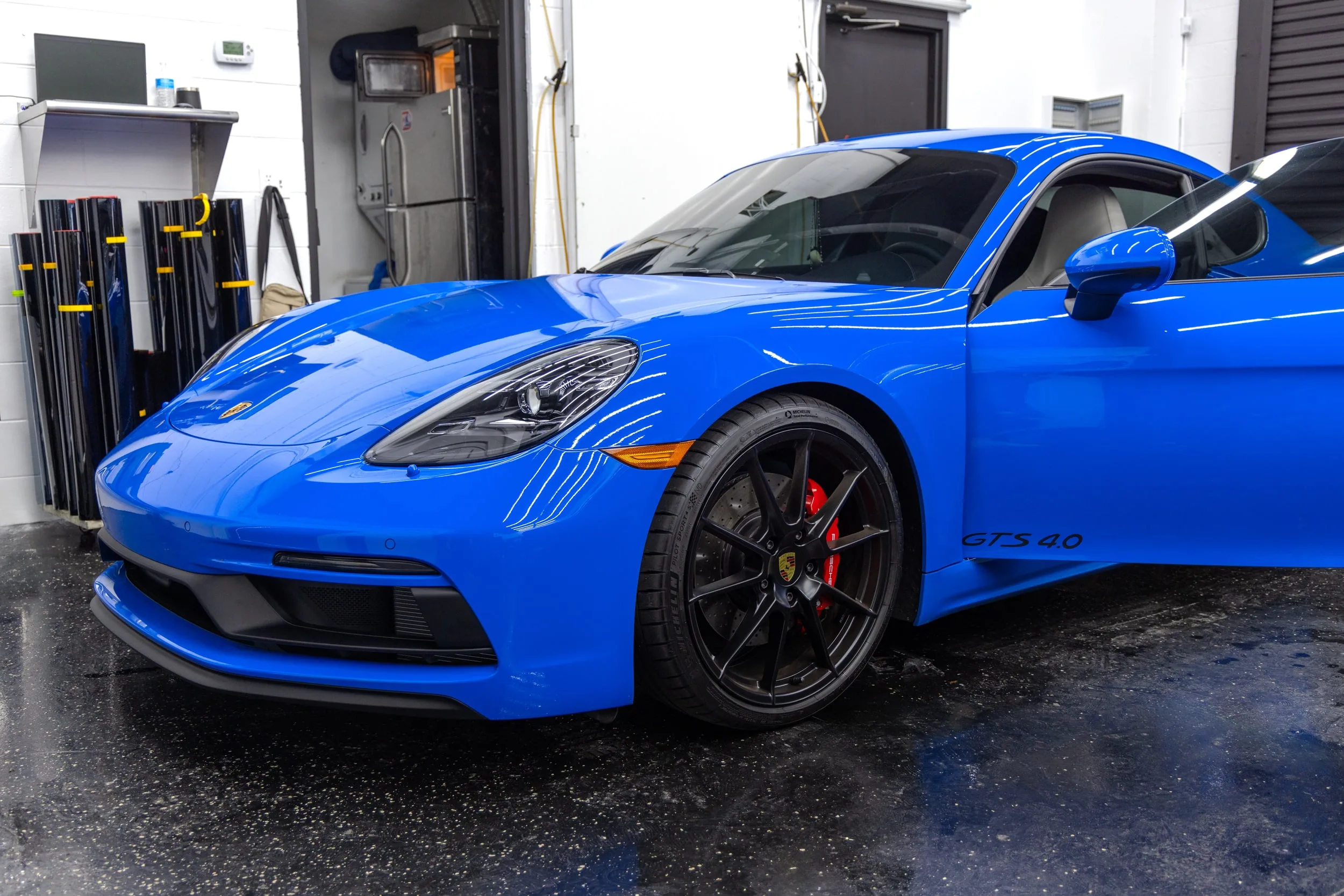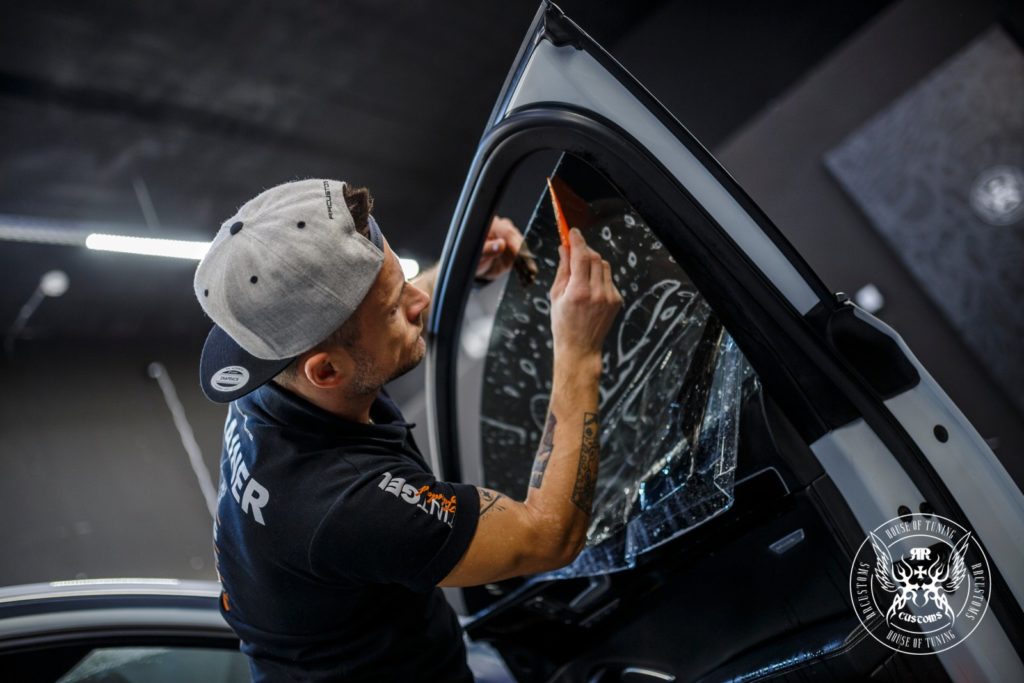A Comprehensive Guide to Comprehending Auto Home Window Color and Its Advantages
Auto home window tinting serves greater than simply an aesthetic objective for vehicles. It provides numerous types, each with unique attributes and advantages. Comprehending these alternatives, together with legal laws and upkeep suggestions, is important for any kind of automobile proprietor. The benefits might greatly improve driving comfort and automobile long life. As one explores the subtleties of window tinting, the question develops: what kind of color is best matched for private requirements?
Recognizing Automobile Window Tint: What It Is and Just how It Works
Car window color works as a safety barrier that enhances vehicle visual appeals while giving functional benefits. This thin film is applied to the indoor surface of auto home windows, minimizing glare and blocking damaging ultraviolet (UV) rays from the sun. By filtering sunlight, car window tint aids to control the interior temperature level of the vehicle, causing boosted convenience for travelers and reduced dependence on air conditioning.Additionally, it secures the automobile's interior from fading, protecting both upholstery and control panel materials. The color can additionally boost privacy, making it harder for outsiders to see inside the car. Specific types of window tint can boost security; in the occasion of an accident, the film aids hold shattered glass together, lowering the threat of injury from flying shards. Generally, automobile home window color serves both visual and useful functions, making it a preferred selection among vehicle proprietors.
Types of Home Window Color: An Overview of Options
When considering home window color choices, numerous types are available, each with distinct attributes. Colored, metalized, and ceramic window colors use varying degrees of warmth denial, UV defense, and aesthetic charm. Comprehending these differences can aid lorry proprietors make educated choices based upon their choices and needs.
Colored Home Window Color
Colored window color stands for a popular option among cars and truck owners looking for a reliable and cost effective means to enhance their automobile's aesthetics and personal privacy. This kind of tint is developed by positioning a layer of color between an adhesive layer and a protective coating, leading to a dark look that lowers glare and enhances visual convenience. While colored home window tint efficiently blocks damaging UV rays, it may not use the very same degree of warm being rejected as various other tint kinds. In addition, its shade can discolor with time, potentially reducing its efficiency. Despite these drawbacks, colored window color stays preferred for its cost-effectiveness and capacity to give a streamlined, trendy appearance to various lorry models.
Metalized Window Color
Metalized home window tint supplies an equilibrium of style and capability, making it a preferred choice amongst automobile proprietors. This sort of color incorporates metal bits within the movie, improving both aesthetic appeal and warmth being rejected. The reflective high quality of metalized tint helps to lower glow and boost personal privacy, while also providing UV security, which safeguards the automobile's inside. Additionally, metalized home window tint can enhance window toughness, potentially stopping ruining during crashes. However, it is essential to keep in mind that the metallic parts can disrupt electronic signals, such as general practitioner and mobile phone function. Generally, metalized home window tint gives an efficient solution for those looking for a combination of appearance, durability, and sunlight protection for their cars.
Ceramic Window Tint
Ceramic home window color stands for an advanced option in the range of auto home window films, providing distinct benefits over traditional colors. Unlike dyed or metalized films, ceramic tints utilize innovative ceramic particles, which efficiently turn down warm and UV rays without endangering presence. This innovation assures that cars remain cooler, minimizing dependence on air conditioning and improving gas performance. Furthermore, ceramic window tints are much less most likely to interfere with electronic devices, such as general practitioner or mobile signals, making them a sensible choice for contemporary cars. Their resilience and scratch resistance add to a longer lifespan compared to other types of colors. Overall, ceramic home window tint supplies superior performance, comfort, and defense, making it a recommended choice for critical car proprietors.
Advantages of Auto Home Window Color: Beyond Aesthetics
While lots of people associate car window color with enhanced style, its benefits expand far past mere aesthetics. One considerable advantage is warm decrease; home window color can block approximately 99% of hazardous UV rays, keeping the interior cooler and safeguarding upholstery from fading. This not just improves convenience during hot weather condition however also decreases reliance on air conditioning, bring about improved gas efficiency.In addition, vehicle window tint supplies an included layer of privacy and safety and security. Tinted windows make it difficult for outsiders to see inside the automobile, which can prevent theft and safeguard belongings. Furthermore, several tints strengthen the glass, minimizing the possibility of smashing in the event of an accident, thus enhancing safety.In enhancement to these functional benefits, vehicle window tint can also add to glow reduction, enhancing presence for chauffeurs and travelers alike. This multifaceted technique to convenience and security makes window tint a useful financial investment for car owners.
Lawful Considerations: Tinting Rules by State
Before dedicating to auto home window tint, car owners must browse an intricate landscape of tinting regulations that differ by state. Each state has specific legislations regulating the acceptable degrees of tint darkness and reflectivity for different windows, consisting of windscreens, front side home windows, and back windows. These policies frequently consist of noticeable light transmission (VLT) percents, which determine just how much light can travel through the tinted glass.Some states permit darker tints on rear windows while restricting front side and windshield colors for safety and security factors. Furthermore, particular states might need a certification from the supplier to verify compliance with tinting legislations. Breaking these policies see here now can lead to fines, necessary elimination of the color, or both. Consequently, it is crucial for automobile proprietors to investigate their state's legislations extensively to assure legal compliance prior to installing window tint. This persistance can conserve money and time in the future.
Choosing the Right Color: Factors to Consider
When picking the suitable window color for a vehicle, numerous important factors enter play. Tint darkness degrees, UV protection rankings, and conformity with lawful laws are necessary factors to consider to ensure both aesthetics and capability. Examining these facets will certainly assist individuals make an educated choice that meets their demands and sticks to regional regulations.
Color Darkness Degrees
Choosing the suitable color darkness level is necessary for achieving the preferred equilibrium between visual appeals and capability in automobile window tinting. Different states have varying legal guidelines regarding tint darkness, which can influence the option. Normally, colors are measured in percentages, with lower portions indicating darker tones. Darker colors offer raised personal privacy and a smooth look however can minimize exposure, especially during the night. Alternatively, lighter tints keep a more open feeling, making certain adequate exposure while still providing some heat and glow reduction. Individuals must consider their driving habits, local regulations, and personal preferences when making a decision. Inevitably, the appropriate tint darkness degree enhances the automobile's appearance while ensuring safety and compliance with lawful criteria.
UV Defense Rating
Color darkness degrees play a significant role in the total performance of automobile window tinting, but another vital variable to review is the UV protection ranking of the picked color. This score indicates the portion of harmful ultraviolet rays that the tint can obstruct. Top notch tints frequently offer 99% or more UV protection, protecting travelers and the vehicle's interior from sunlight damage. Davinci of Michigan. Long term exposure to UV Visit This Link rays can result in skin problems and fading of furniture, making a high UV defense rating crucial for wellness and long life. When picking window tint, customers need to prioritize this ranking together with darkness degrees to ensure maximum comfort and security while driving. Understanding these variables aids in making a notified choice when purchasing automobile home window tinting
Lawful Rules Conformity
Understanding regional legal guidelines is crucial for any person considering vehicle home window tinting. Each state or area has particular regulations controling the allowed levels of color darkness and reflectivity for different home windows. These guidelines commonly specify the visible light transmission percentage, determining how much light can pass through the colored glass. Non-compliance can bring about fines, obligatory elimination of the color, or problems during vehicle inspections. Additionally, some locations might have restrictions on using certain tinting materials, calling for customers to pick products that fulfill safety criteria. It is vital for vehicle proprietors to investigate their regional laws thoroughly before choosing window color to guarantee compliance and avoid possible lawful complications.

Installment Process: DIY vs. Specialist Services
Exactly how does one make a decision between a do it yourself installation and employing specialist solutions for auto home window tinting? The selection frequently hinges on budget plan, experience, and preferred outcomes. A DIY method can be economical, enabling people to save money on labor costs. It needs a specific level of skill and expertise concerning the tinting procedure. Those that are thorough and individual may find success with do it yourself kits available in the market.Conversely, specialist services provide know-how and top quality materials, ensuring a flawless coating. Professionals usually ensure navigate to this site their work, supplying comfort against potential issues such as peeling or bubbling. Additionally, they recognize with neighborhood legislations relating to tinting, which can be complex for the average auto owner.Ultimately, the decision shows a balance between expense, individual capability, and the anticipated high quality of the tinting work. Each alternative has its advantages, and the finest option depends on specific circumstances and preferences.
Maintenance Tips: Keeping Your Tint in Leading Problem

Frequently Asked Concerns
The Length Of Time Does Window Tint Typically Last on a Car?
Window tint generally lasts in between 5 to 10 years, relying on aspects such as top quality, application, and ecological conditions. Regular maintenance and appropriate treatment can prolong its life-span, making certain suitable performance and look over time.
Can Home Window Tinting Damages My Vehicle's Original Glass?
Home window tinting, when applied appropriately, does not harm a cars and truck's original glass. Nonetheless, incorrect installment or low-quality products may lead to problems like peeling or bubbling, possibly affecting the glass's integrity with time.
Is Home Window Tinting Safe for All Sorts Of Vehicles?
Window tinting is normally secure for most vehicles, offered the film follows regional guidelines and is correctly used. Some specific lorries might require particular factors to consider, making it crucial to seek advice from experts before installation.
Will Home Window Tinting Void My Car Guarantee?
The question of whether window tinting spaces a cars and truck service warranty frequently depends upon the maker's plans. Generally, if the tint does not harm the car, warranties normally continue to be undamaged. Consulting the dealership is recommended.
Can I Remove Home Window Tint Myself if Needed?
Eliminating home window tint oneself is feasible, but it needs cautious focus to prevent damaging the glass. Individuals should make use of ideal tools and methods to guarantee an effective removal without leaving adhesive deposit or scrapes behind. While colored home window color effectively obstructs dangerous UV rays, it may not offer the exact same level of warmth being rejected as other tint types. Ceramic window color stands for an innovative choice in the range of automobile window movies, offering distinctive advantages over standard colors. Before devoting to auto home window color, car owners need to browse a complex landscape of tinting guidelines that vary by state. These guidelines usually consist of noticeable light transmission (VLT) percentages, which dictate just how much light can pass via the colored glass.Some states allow darker colors on back windows while restricting front side and windshield tints for security factors. Color darkness levels play a substantial function in the overall efficiency of car home window tinting, however an additional crucial factor to assess is the UV defense ranking of the picked tint.